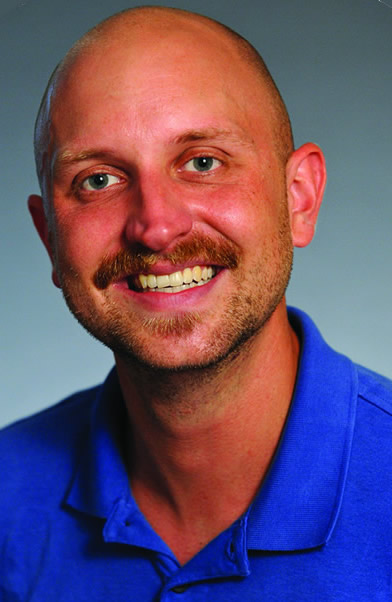The Nature of Cancer
An expert's take on environmental factors linked to cancer and best bets for prevention

What in the world caused my cancer? It's a huge question with many factors, including a person's health history, lifestyle, exposure to elements in the environment and how an individual's DNA responds to all of it. We sat down with Justin Colacino, Ph.D., a research assistant professor at the University of Michigan School of Public Health, whose work focuses on understanding environmental and dietary factors that cause cancer -- and how to prevent it.
Q. How do scientists know if a substance in the environment causes cancer?
Short-term tests usually use cells in a dish to see whether a compound can cause DNA mutations. Longer-term tests typically involve exposing laboratory rodents to multiple doses of a chemical for an extended period of time, usually two years. Scientists then monitor the rodents for tumor development and calculate if the rate of tumor formation is greater than would be expected by chance.
The gold standard for determining whether a compound is a human carcinogen (cancer-causing agent) is by examining cancer rates in individuals who have been highly exposed to a compound, usually in a work-related setting. If these people have higher than expected rates of cancer, particularly rare cancers, this provides the strongest evidence that a compound is a human carcinogen.
Q. How do scientists decide which substances to test in animals, labs or humans?
With drugs and medical devices, the manufacturer is responsible for demonstrating safety to the FDA before the product is released to the market. However, with the vast majority of chemicals, food additives, and cosmetics, the burden is instead on regulators to prove that the compound is dangerous. Much of this work ends up being performed by scientists working for the government or at universities, who choose compounds to study based on exposure trends or the likelihood of the compound causing a biological effect.
Q. How do scientists determine the risk levels associated with cancer-causing substances?
Two major groups worldwide that evaluate the potential carcinogenicity of chemicals are the International Agency for Research on Cancer (IARC) and the United States Environmental Protection Agency. Panels of scientists will determine the carcinogenicity risk of a compound by reviewing all of the data from cell and animal experiments in combination with data on the cancer rates and types in highly exposed human populations.
Q. How do public health officials determine acceptable levels of exposure?
Regulatory agencies and public health officials conduct a human health risk assessment based on available data. This involves:
2. Determining how much of a compound is necessary to cause a negative health effect
3. Assessing the major routes by which people are exposed to a compound and determining at what concentration they are exposed
4. Determining how well the existing data support conclusions about the risk of exposure to the substance
These guidelines often have the goal of protecting the most vulnerable individuals in a population (the very young and very old). Rarely, however, do they set limits of exposure to multiple chemicals simultaneously.
Q. What do you think are the most pressing environmental concerns people should be aware of?
There is a lot of interest in understanding the effects of chemicals that mimic estrogen in the body, such as bisphenol A or parabens. Animal experiments show that exposure to these compounds in utero influence how the breast develops and can increase the risk of breast cancer later in life. Many research groups are working to understand if exposure to these compounds can cause breast cancer in people.
Additionally, there is growing evidence that links obesity to the development of many types of cancer, including breast cancer. The prevalence of obesity worldwide has more than doubled since 1980, making obesity one of the largest preventable risk factors for cancer.
Q. What can people do to protect themselves?
There are some well-defined risk factors: eating a poor quality diet, smoking and not exercising. Eating a healthy, well-balanced diet, not smoking and getting the recommended amount of exercise are still the best ways we know of to prevent cancer.
There are a number of cancers that are linked with viral infections that are preventable by vaccine, such as the human papillomavirus (HPV) vaccine. The hepatitis B vaccine has been shown to effectively prevent hepatitis-associated liver cancer.
Finally, look for and demand products that are not made with estrogen mimicking compounds like bisphenol A and parabens. In recent years, consumer pressure on companies to change their manufacturing processes has been more successful in removing toxicants from products than government regulation.
Learn more about the U-M School of Public Health and its mission to promote health and prevent disease.
Continue learning about the environment and cancer
